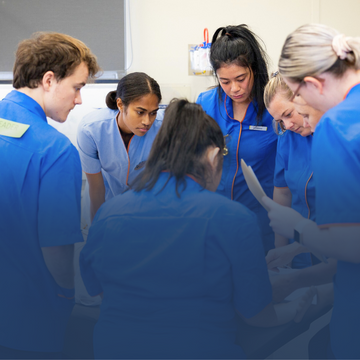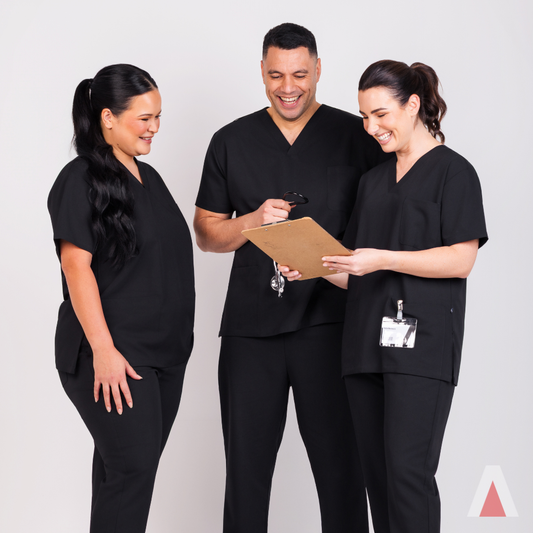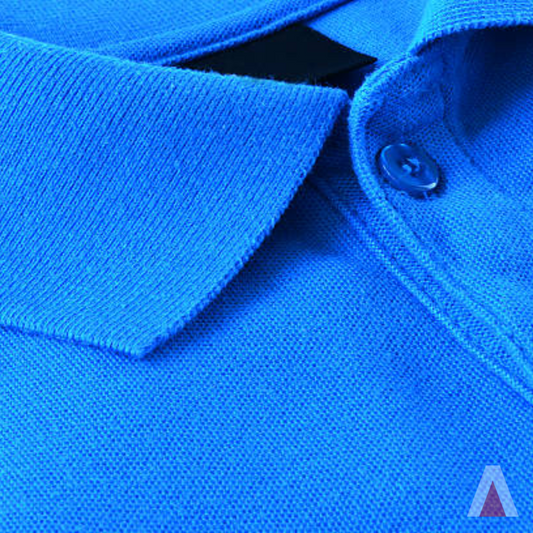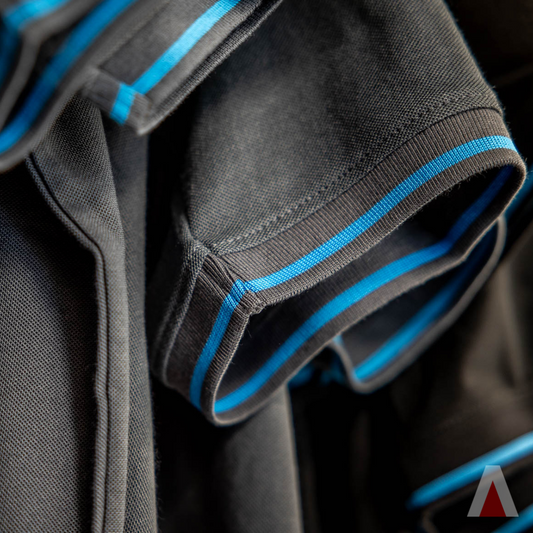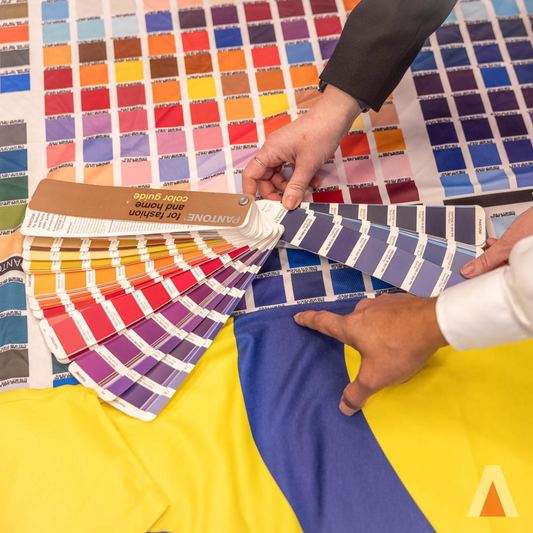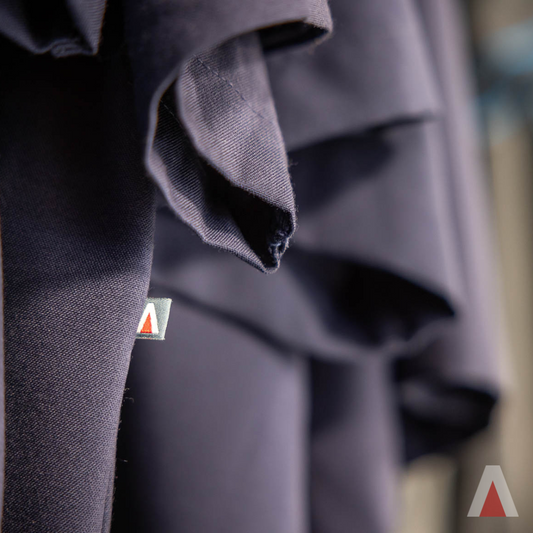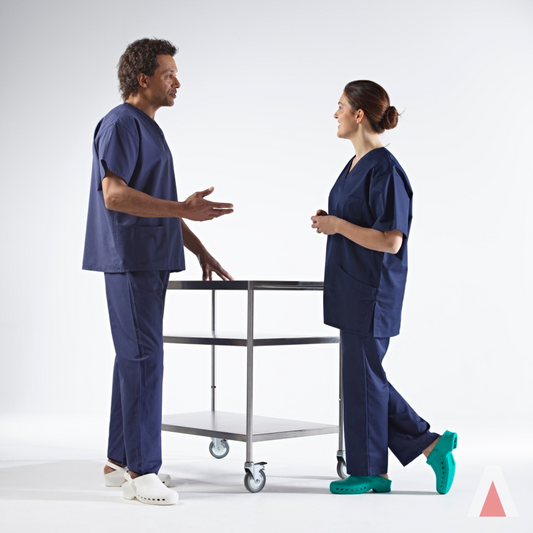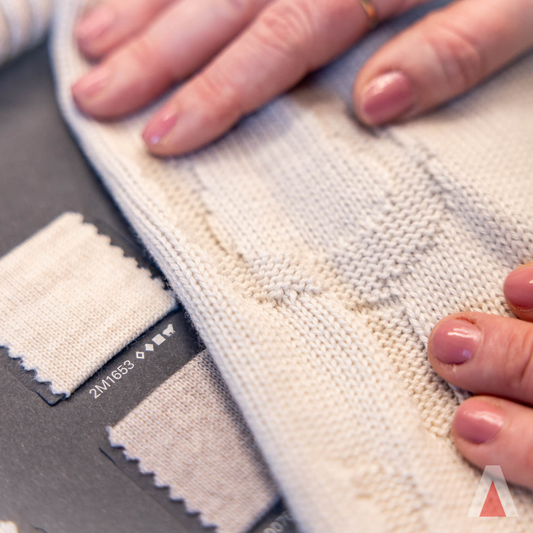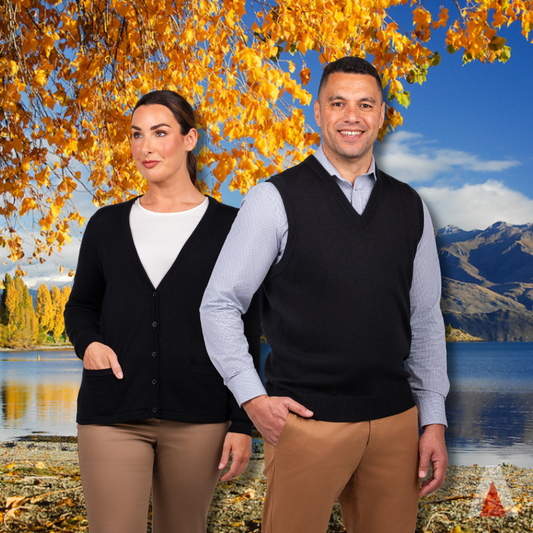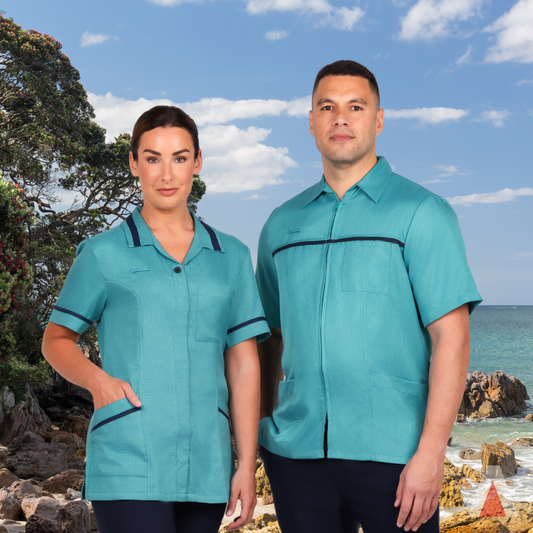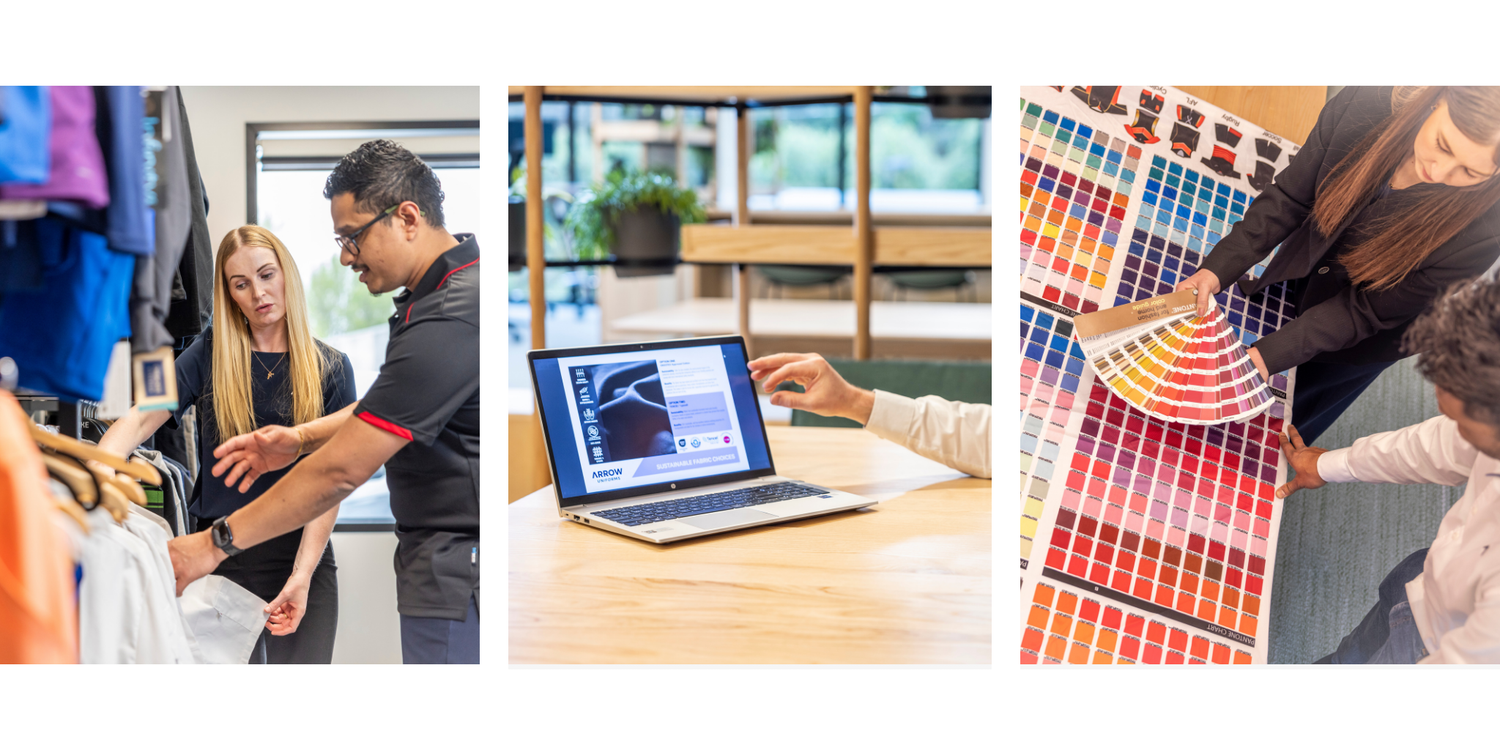
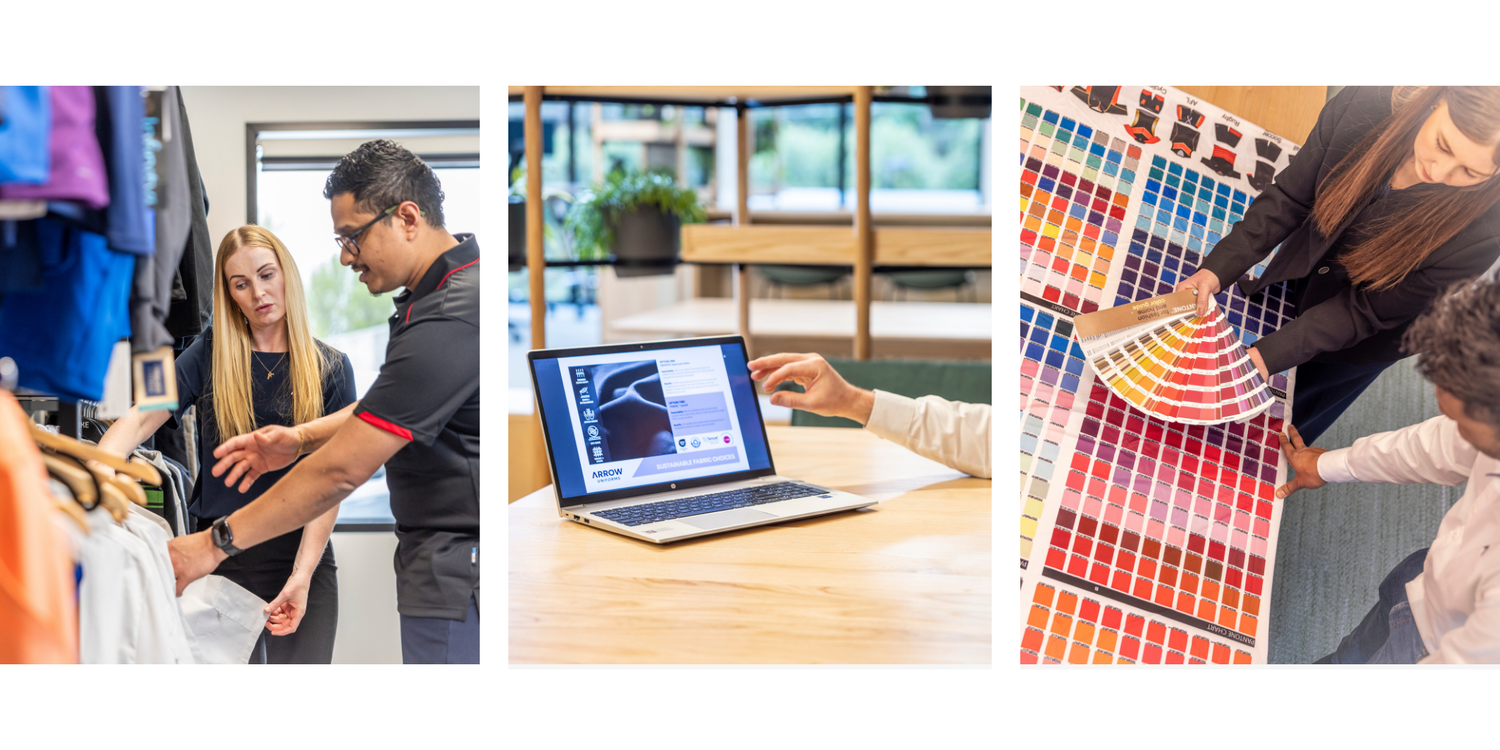
Stay Sharp Blog
Explore expert insights, brand stories and practical tips from the team at Arrow Uniforms. From sustainable workwear trends and ethical sourcing to cost-saving strategies and uniform care, the Stay Sharp Blog helps you make informed decisions that keep your team looking sharp and performing at their best.
Stay Sharp Blog
Why Toffeln® Footwear Is a Step Ahead in Workplace Comfort
From long hospital shifts to fast-paced hospitality environments, the right footwear isn't a luxury – it's a necessity. That's why Arrow Uniforms proudly partners with Toffeln®, a brand that has revolutionsied workplace footwear with comfort, science, and safety at the core.
Designed for Professionals Who Are Always on Their Feet
Toffeln® doesn't just make shoes – they engineer comfort. Each pair is the result of extensive research with healthcare professionals and clinical biomechanics experts. Whether you're a nurse on a 12-hour shift or a chef moving between prep and plating, Toffeln® shoes are designed to protect your posture, reduce fatigue, and support your stride.
What makes them different?
Ergonomic support reduces pressure on joints and back
Slip-resistant soles for safety in high-risk environments
Breathable, antimicrobial materials for all-day freshness
Lightweight construction that doesn't compromise durability
Science-Backed Comfort: Tried, Tested, Trusted
According to Toffeln®'s internal studies, wearers experience a median 50% reduction in pain after switching to Toffeln® footwear. That's not just comfort – it's better performance, reduced absenteeism, and long-term wellness for your team.
Popular models like the SmartSole Trainers and the Ultralite Clogs are built using Toffeln®'s Flexible Air System, which includes cushioned insoles, shock absorption, and flex points that adapt to the foot's natural motion.
Perfect Fit for Healthcare, Aged Cared, and Hospitality
Toffeln® styles available through Arrow Uniforms cater to multiple sectors:
Healthcare & Aged Care: Closed-in designs like FlexiKlog and ErgoKlog offer cleanability, safety, and anti-static properties – perfect for medical environments.
Hospitality: Breathable mesh trainers like the SmartSole range offer a smart-casual look with performance-grad comfort.
Lab & Food Service: Easy-to-sanitise slip-ons are ideal for sterile or hygiene-critical areas.
As part of Arrow's uniform solutions, we ensure Toffeln® footwear is integrated into your team's uniform rollout seamlessly – with the correct sizes, styles, and colourways that align with your workplace identity.
Exclusive in New Zealand Through Arrow
Toffeln® footwear is exclusively available in New Zealand through Arrow Uniforms, making it easier than every for Kiwi businesses to access internationally trusted footwear innovation. Whether you're outfitting a new team or upgrading your current supply, our team can help you build Toffeln® into your broader uniform solution.
Why Choose Toffeln® Through Arrow?
→ Product expertise to recommend the best styles by role→ Try-on kits to ensure accurate sizing across your team→ Seamless ordering and reordering through myArrow→ Exclusive access to full Toffeln® footwear range and ongoing support
Ready to Put Your Best Foot Forward?
Toffeln® footwear helps your team stay comfortable, safe and focused – shift after shift. Chat to our team today about adding Toffeln® to your uniform programme or request a sample to experience the comfort first-hand.
NanoStretch Scrubs: The Science of Comfort Meets Everyday Performance
In healthcare, aged care, and beauty, every day is fast-paced, physical, and full of purpose. That's why we developed NanoStretch, a next-generation scrub fabric engineered for comfort, movement, and performance – made for people who never stop moving.
The Science Behind NanoStretch
At first glance, NanoStretch scrubs look simple and sleek. But behind the design lies a carefully balanced blend of performance fibres:
42% Polyester | 19% Recycled Polyester | 19% Graphene | 16% Rayon | 4% Spandex
This combination delivers flexibility, durability, and comfort in every shift – with fabric technology that adapts to high-tempo, high-touch roles.
What sets NanoStretch apart:
4-Way Stretch: Allows full range of motion for bending, lifting, and reaching without restriction
Balanced Weight (190gsm): Substantial enough to provide structure and coverage while still offering breathable comfort
Faster Drying: Dries faster than traditional polycotton or polyviscose blends, helping busy professionals manage quick turnarounds
Soft Touch: Rayon content provides a smooth, comfortable feel against the skin for all-day wear
Reduced Creasing: Designed to hold its shape well and resist significant wrinkling, keeping teams looking sharp throughout the day
Designed for Real Work, Not the Runway
Innovation isn't about flashy features – it's about function that makes a difference. NanoStretch scrubs were refined through feedback from healthcare and care sector professionals who told us what they really need:
Freedom to move without feeling restricted
Durable comfort that lasts through long shifts
Easy-care wearability between washes
A professional, modern look that fits how they work
Every pocket, seam, and panel is purpose-built – blending movement, function, and performance into a scrub that actually supports the people who wear it.
Innovation with a Lighter Footprint
While NanoStretch isn't made entirely from recycled materials, it does include recycled polyester fibres, giving a portion of the fabric a more sustainable edge. It's a practical step forward in Arrow's ongoing commitment to responsible design and lower-impact uniform solutions.
We're continuously working to integrate smarter, more sustainable materials – without compromising the performance and quality teams rely on.
Ready to Move Better?
When your day demands flexibility, reliability, and comfort that lasts, NanoStretch scrubs are designed to deliver.
Explore the NanoStretch Scrubs Collection.
Why Do Polo Shirt Collars Curl Up? The Truth is in the Stitching
If you've ever noticed polo shirt collars curling up at the edges – especially after a few washes – you're not alone. While it may seem like a minor detail, this issue is a clear sign of poor manufacturing. And for a uniform, where first impressions matter, a curly collar just doesn't cut it.
So, what's going on here?
The Anatomy of a Proper Polo Collar
In high-quality polos, the collar is more than just an afterthought – it's precision engineered. A well-constructed collar is:
Knitted on a specialist machine,
Made to a specific length,
Designed to match the neckline exactly
When these steps are followed, the result is a collar that lays flat and holds its shape. Every time. No curls. No fuss.
The Shortcut Some Manufacturers Take
Unfortunately, not all polo shirts are made this way. To cut costs, some manufacturers use a "one-size-fits-most" approach to collars. Instead of making collars that match the shirt precisely, they stretch a slightly smaller collar to fit the neckline.
At first glance, it might look okay. But once that shirt goes through a few wash cycles, the tension reveals itself. The overstretched collar begins to curl – leaving wearers looking unkempt and uniforms appearing subpar.
Why This Matters for Uniforms
Uniforms are more than clothing – they're a reflection of your brand. Inconsistent details like a curling collar can:
Undermine professionalism,
Impact team confidence,
Diminish the overall impression your team makes
If you're investing in uniforms, you deserve consistency, durability, and quality in every detail – including the collar.
The Arrow Difference
At Arrow Uniforms, we don't believe in shortcuts. Our polos are engineered with precision, using collars that are made to fit. We take pride in the small details because we know they're what elevate a uniform from acceptable to exceptional.
Not sure if your current polos measure up? Check the collar. If it's curling, it might be time to rethink your uniform supplier.
Or better yet – talk to us. We'll make sure your team always looks the part.
Fine vs Functional: Why Durability, Not Delicacy, Wins in Workwear
In the world of textiles, fabric tells more than a fashion story – it defines purpose. The tailoring industry often reveres ultra-fine European wools and light wool blends for their luxurious feel, sophisticated drape, and prestige for use in high-end corporate tailoring and haute couture. But step into a hospital, a kitchen, or a busy retail floor, and these delicate fabrics simply wouldn't hold up - the fabric is just too thin.
So, what makes a fabric work for workwear?
The Finer the Fabric, the Higher the Risk
High-end suiting fabrics are typically light in weight and woven from ultra-fine yarns, often wool or luxury blends. These are the showpieces of fashion runways and boutique collections – designed for visual impact, not repeated wear under pressure. Their allure comes at a cost:
Higher price point due to rarity and craftsmanship
Delicate handling requirements, including dry cleaning and specific storage
Easily damaged
Limited durability, especially when exposed to friction, pulling, or sharp edges
In fact, the very characteristics that make these fabrics sought-after in designer circles make them unsuitable for workplace environments where uniforms need to last, move and protect.
Why "Cheaper" Fabrics Last Longer
Workwear demands something else entirely: practicality, strength, launderability and longevity. That's why Cotton, Polycotton, and Polyester blends are industry staples across healthcare, hospitality, and service sectors. While they may not turn heads in a fashion editorial, they delivery where it counts:
Durability – Engineered to resist snags, tears, and fading
Easy care – Machine washable, quick-drying, and often crease-resistant
Affordability at scale – Cost-effective for outfitting large teams without compromising on performance
It might sound counterintuitive, but "rougher" constructions almost always mean, longer life. Tightly woven polyester, for example, is harder to tear than ultra-fine wool and is also easier to care for. In this way, functionality beats finesse every time for demanding roles.
Design Innovation Meets Durability at Arrow
At Arrow Uniforms, we design fabrics not for catwalks – but for careers. In saying that, our uniforms have wowed high-society and featured on the runway in NZ Fashion Week. Functionality can be achieved with creativity to combine form with function.
Our in-house design team collaborates closely with our suppliers to craft textiles that balance comfort, durability, and visual appeal. Innovations like:
Antimicrobial fabric finishes
Moisture-wicking blends and
Temperature-regulating fibres
...allow us to push the boundaries of what "workwear" can be, without sacrificing performance or aesthetic.
Key Takeaway: Fabric Tells a Story – Make Sure It's the Right One
Choosing fabric for uniforms isn't just about appearance – it's about how it performs under pressure, how long it lasts, how it washes up day after day, and how it supports the people wearing it.
So while finely tailored luxury suits may shine in showrooms, workwear shines on the floor – doing the hard jobs, wash after wash, day after day.
Why Lab Dips Matter in Uniform Manufacturing
When clients receive their uniforms, they expect consistency – across sizes, styles, and especially colour. But few realise just how much work goes into making sure every garment is dyed to exactly the right shade. That precision starts not on the production floor, but in a laboratory, with something called a lab dip.
At Arrow Uniforms, we take this step seriously, because getting colour right isn’t optional. It’s essential.
What Is a Lab Dip
A lab dip is a small sample of fabric that’s been dyed in a lab to test and demonstrate a colour match before full-scale fabric production begins. It's the very first checkpoint in ensuring a uniform meets brand and quality expectations.
The process begins with a colour reference – often an existing garment or a Pantone (PMS) code. The dye house then creates several versions of the formula to find the closest match. Each sample is dyed, dried, labelled, and cut into a small swatch – then sent to us for review.
Precision Over Assumption
These swatches aren’t approved lightly. Internally, we compare them to existing garments or other pieces in a range. In many cases, the client is also involved, particularly for branded ranges. Everyone from production to account management weighs in – because what looks right under one light may look very different under another.
Once a lab dip is approved, that exact dye formula becomes the reference point for bulk production and any future reorders. That’s what allows us to maintain consistency over time – even as fabric runs and dye batches evolve.
It Doesn’t Stop There
Before production begins, a length of the final dyed fabric is sent to us again. We review this against the approved lab dip – another checkpoint before even a single garment is sewn.
If it doesn’t match? We don’t move forward.
Sometimes fabric can be redyed or adjusted. In other cases, the dye lot must be redone entirely – starting from the greige (raw) yarn stage. It’s not ideal, and yes, it can cause delays. But what’s worse than waiting? Delivering uniforms that don’t match.
Why This Matters
Uniforms are a visual extension of a brand. A mismatch in colour – even by a few shades – can undermine the professionalism and cohesion that clients rely on. Whether it’s a nationwide retail rollout or a healthcare provider ordering monthly top-ups, colour continuity is not negotiable.
Lab dips are our frontline defence against inconsistency. They may seem small, but their impact is anything but.
Our Commitment to Quality
At Arrow, we’ve built our processes around the belief that good enough isn’t good enough. We’ve turned away fabric shipments. We’ve started from scratch when needed. And we’ve invested in multi-stage approvals to protect the integrity of every uniform we deliver.
Because every colour choice is a brand statement – and we’re here to make sure it’s the right one.
How the Butchers Bratting Apron Became an Icon of New Zealand Hospitality
There's something unmistakably classic about the butcher's apron. In trade folklore, horizontal stripes say "butcher," while vertical ones whisper "fishmonger." It's a garment that doesn't just protect – it tells a story.
At Arrow Uniforms, we decided to write a new chapter in that story back in the 1990s.
Reinventing a Classic
When we first entered the uniform business, we took inspiration from the traditional butcher's apron – a well-worn icon in kitchens and butcheries across the country. But we knew it needed a refresh. So, we took the original version to our mill and said, "Copy this – but make it darker, richer, more modern."
The result? A sharp, deep navy striped apron that had all the heritage appeal of the original but with a bold contemporary edge. We called it the Butchers Bratting Apron – a term rooted in traditional food processing trades. The term may be old-school, but the apron was anything but!
A Hit in Hospitality
The new navy Butchers Bratting Apron didn't just land – it took off. It quickly outshone the old lighter navy styles that had dominated the market. Its success spurred us on to introduce more colours. First came deep Forest Green, a bold choice at the time that soon became a favourite in food service environments throughout the 2000s.
Then came Black – and that's when things really exploded. If navy was fantastic and green was a hit, black was a phenomenon. Orders surged, and we could barely keep up with the demand. This trifecta – navy, forest green, and black – cemented the Butchers Bratting Apron as the go-to apron for New Zealand's hospitality professionals.
This wasn't just a protective layer; it became a badge of honour. A statement that said: "I'm not just a good cook – I'm a great one."
Royal Endorsements and Lasting Legacy
Perhaps the ultimate endorsement came when New Zealand's own culinary icon, Ruth Pretty, selected our Butchers Bratting Apron while catering for Prince William and Prime Minister John Key at a Government House BBQ. It was a proud moment that reinforced the apron's place in Kiwi culinary culture.
Today, with over 100,00 aprons sold, the Butchers Bratting Apron remains a core part of the Arrow Uniforms range. You'll find them in some of the best kitchens and food outlets across the country.
And, they're built to last. Made from highly durable, commercially launderable fabric, the stripes are woven directly into the yarn – so they never fade, no matter how many washes.
Join the Legacy
Whether you're a chef, butcher, café owner or the weekend BBQ king or queen – you too can wear a piece of uniform history. Slip on a Butchers Bratting Apron next time you cook, and wear it with pride.
Because being iconic isn't just about what you cook – it's what you wear while cooking that counts!
The Smaller the Logo, the More Exclusive the Brand
Why Subtle Branding Speaks Louder in Today's Marketplace
We live in a world where logos are everywhere – splashed across shirts, stitched into caps, embossed on cars, and printed on packaging. Visibility is often the goal. But when it comes to premium branding, something fascinating happens:
The more exclusive the brand, the smaller the logo.
It may seem counterintuitive. Shouldn't high-end products shout their presence? Not quite. In the world of true prestige, exclusivity whispers. It doesn't need to prove itself – it simply is.
A Subtle Statement: Lacoste
Take Lacoste, for example. Its iconic crocodile is tiny – often just a few centimetres stitched on the chest. And yet, it speaks volumes.
Why? Because Lacoste doesn't need to scream. It's worn by people who appreciate timeless design, quality craftsmanship, and quiet confidence. The logo's purpose isn't to convince – it's to confirm.
Porsche: One Brand, Many Audiences
Let's shift gears to a different kind of prestige – Porsche. It's a masterclass in logo scalability and brand context.
On the desk of a CEO, the Porsche emblem might be etched into a luxury pen or subtly embossed on a leather notebook – discreet and deliberate
In a service centre, Porsche technicians wear uniforms with mid-sized logos – practical and professional, signaling brand alignment without shouting
On the racetrack, Porsche motorsport crew uniforms and vehicles feature bold, oversized logos – designed for maximum visibility and high-speed brand theatre
Each logo application reflects the audience and environment – from understated elegance to high-octane recognition.
Why Smaller Logos Signal More
There's psychology at play here:
When you don't need to prove something, you don't overstate it.
Smaller logos assume the observer already knows – that they're in the know. And that's the essence of exclusivity. It's a quiet confidence rooted in product, not promotion.
That's why bespoke suits, handcrafted watches, and luxury travel luggage often have little to no branding – just exceptional detail and deliberate design.
The Rule of Exceptions
Of course, not all branding is meant to be subtle. In streetwear or sportswear, for example, loud logos are part of the culture – think Nike, Supreme, or Red Bull Racing.
Here, visibility is identity. In those contexts:
Loud logos = belonging, energy, culture
Quiet logos = exclusivity, legacy, refinement
Understanding the why behind logo sizing is key to making the right brand choice.
What This Means for Uniform Branding
At Arrow Uniforms, we think deeply about how branding works – not just what a logo looks like, but what it says. A single logo can carry different meaning depending on its size, placement, and purpose.
Here's how we approach it:
Subtle lapel branding on an executive jacket = polish and prestige
Chest-level logos on retail uniforms = trust, approachability, consistency
Large back logos on event t-shirts = high visibility for fast-paced environments
Each application is intentional – because how you wear a brand matters just as much as the brand itself.
Final Thought
In branding, sometimes less really is more.
The smaller the logo, the more it trusts the world to recognise it – and that is the ultimate flex.
Talk to the Arrow team today about how we can help your brand come alive!
Why Healthcare Professionals Need to Replace Their Footwear Regularly
Your feet carry you through the most important work of all – caring for others. But are your shoes supporting you like they should?
Why Footwear Matters in Healthcare
For healthcare professionals, uniforms aren't just about appearance – they're about performance, safety, and wellbeing. And while scrubs often take the spotlight, footwear is just as vital. Nurses, doctors, and allied health workers can walk over 15,000 steps per shift, standing for hours, and responding rapidly to patient needs.
Wearing worn-out shoes impacts not just your comfort, but your safety and hygiene. That's why regularly replacing your work shoes is essential – not optional.
When Should You Replace Healthcare Shoes?
A good rule of thumb: replace your footwear every 6-12 months, depending on factors such as:
Workload: More hours on your feet = faster wear and tear
Foot biomechanics: Flat feet, high arches, or gait issues increase pressure points
Environment: Wet floors, chemical exposure, and constant movement accelerate breakdown
Shoe quality: Even premium shoes need assessment every few months
If you work long shifts or high-pressure roles, your shoes may need replacing closer to the 6-month mark.
The Risks of Worn-Out Shoes
Outdated or damaged shoes can do more harm than good. Key concerns include:
Foot Pain and Fatigue – Flat or unsupportive soles increase pressure and strain
Plantar Fasciitis – A lack of arch support can inflame foot ligaments, causing chronic pain
Joint & Back Pain – Poor shock absorption affects alignment from ankles to spine
Slip Hazards – Tread wears down over time, increasing the risk of falls
Hygiene Issues – Old shoes trap moisture and bacteria, compromising infection control
In fact, 32% of NHS workplace injuries in 2022-23 were due to slips, trips, and falls – a stark reminder of how crucial good footwear really is.
Maintaining Hygiene and Safety
Healthcare environments expose shoes to:
Bodily fluids
Harsh cleaning agents
Bacterial hotspots
While regular cleaning helps, there comes a point when a shoe's materials begin to degrade – reducing their waterproofing, anti-microbial properties, and structural support. Replacing them ensures you're meeting hygiene standards and minimising health risks.
Why Investing in the Right Footwear Matters
At Arrow, we recommend investing in purpose-designed footwear like the Toffeln range, made specifically for healthcare environments. Features include:
Slip-resistant soles for better grip in wet areas
Ergonomic design that reduces fatigue and supports alignment
Shock-absorbing midsoles to cushion impact during long shifts
Hygienic, easy-to-clean materials that meet infection control protocols
Choosing the right shoes, and knowing when to replace them, is one of the easiest way to improve comfort, protect your health, and avoid injury.
Prioritise Foot Health, Boost Performance
Your uniform does more than signal professionalism – it's your first line of defence in a physically demanding role. And that includes your shoes. Regular replacements aren't just about comfort – they're a proactive step toward:
Improved posture and joint health
Reduced risk of injury
Greater daily comfort
Better hygiene standards
Ask yourself: When did I last replace my work shoes? If it's been over six months, it may be time for an upgrade.
Step Into Safety & Comfort
Explore Arrow's full range of healthcare footwear solutions, including Toffeln – designed for those who stand all day to support others.
Shop the collection now or get in touch to learn more about bulk discounts for your healthcare team.
Redesigning Workwear: Where Smart Fabrics Meet Smarter Design
Workwear is evolving. At Arrow, we’re combining smart fabrics with refined design to deliver uniforms that perform — sustainably, comfortably, and stylishly.
From recycled materials like REPREVE® to stretch panels and discreet functionality, our garments are engineered to support the people behind the uniform — every day, in every role.
What to Wear This Autumn: Workwear Essentials for the Season
Cooler mornings and unpredictable weather call for workwear that adapts. This autumn, layering is key — with base, mid, and outerwear options built for comfort, performance, and style.
Arrow’s 2025 autumn range focuses on flexible layering systems, seasonal colour palettes, and sustainable fabrics to keep your team looking sharp and feeling warm — indoors or out.
From Wool to Cool: The Evolution of Summer Workwear in New Zealand
From wool aprons to Cool Comfort® performance fabrics, summer workwear in Aotearoa has come a long way. Kiwi workplaces need uniforms that can handle the heat, the humidity, and the unpredictability — without sacrificing comfort or professionalism.
At Arrow Uniforms, we’ve helped shape this evolution with breathable, sustainable, and durable solutions designed for real-life New Zealand summers.
Subscribe to Stay Sharp!
Enter your email below to be the first to know about new blogs, promotions, product launches, business news, and more.

